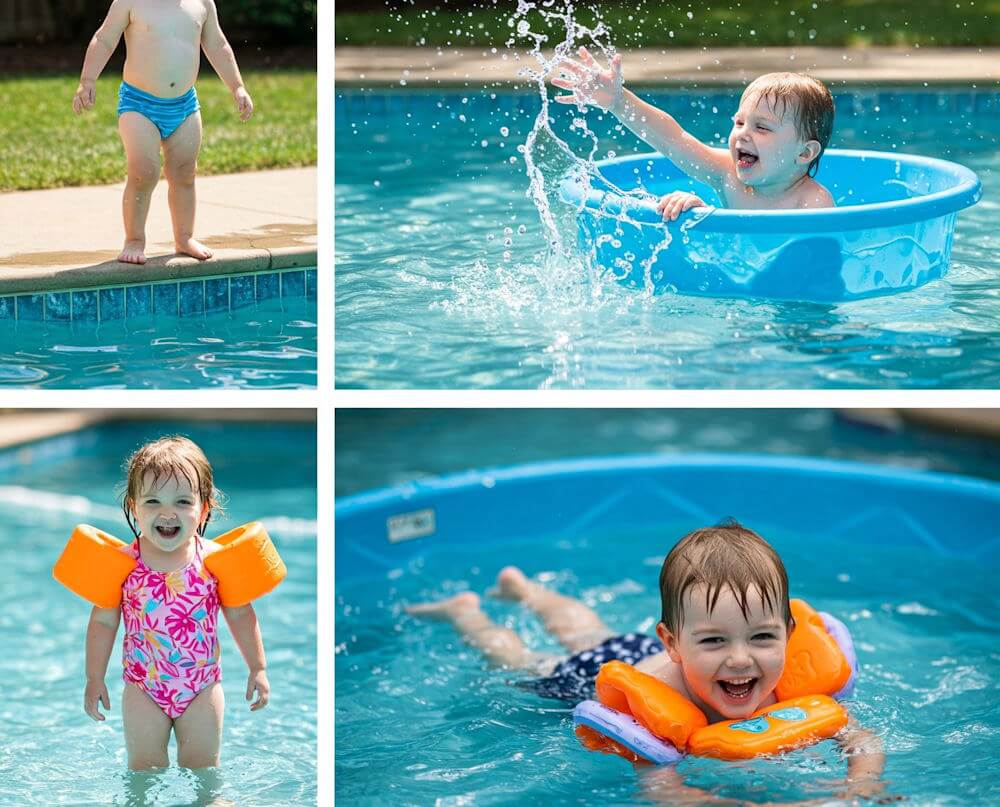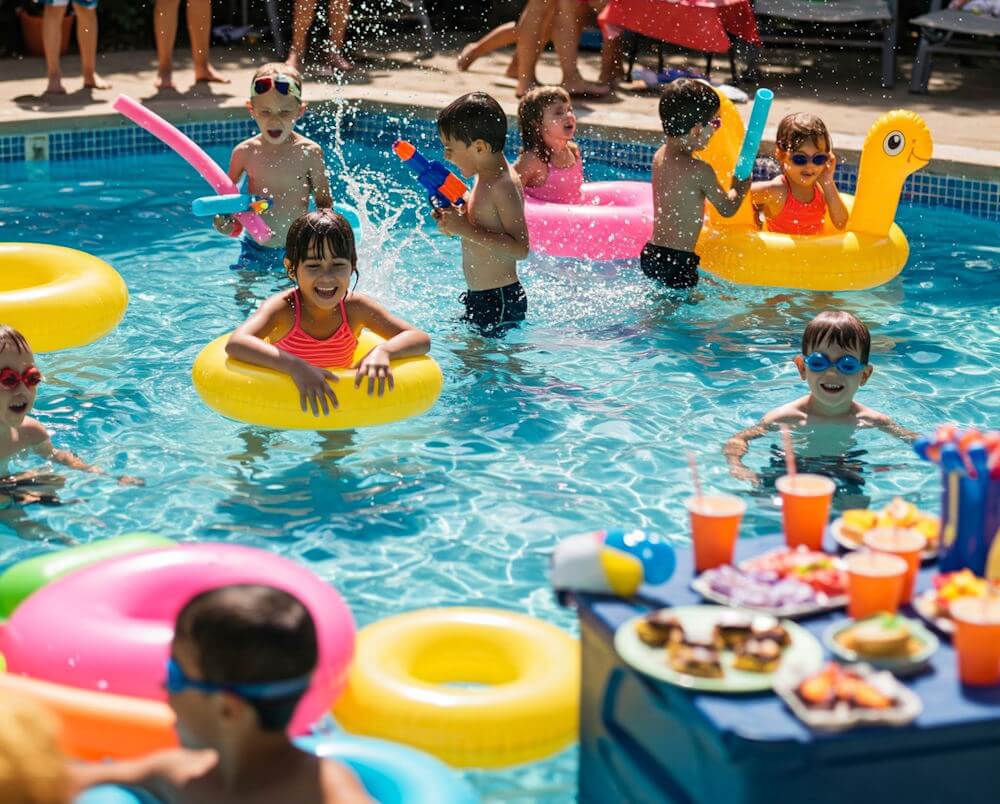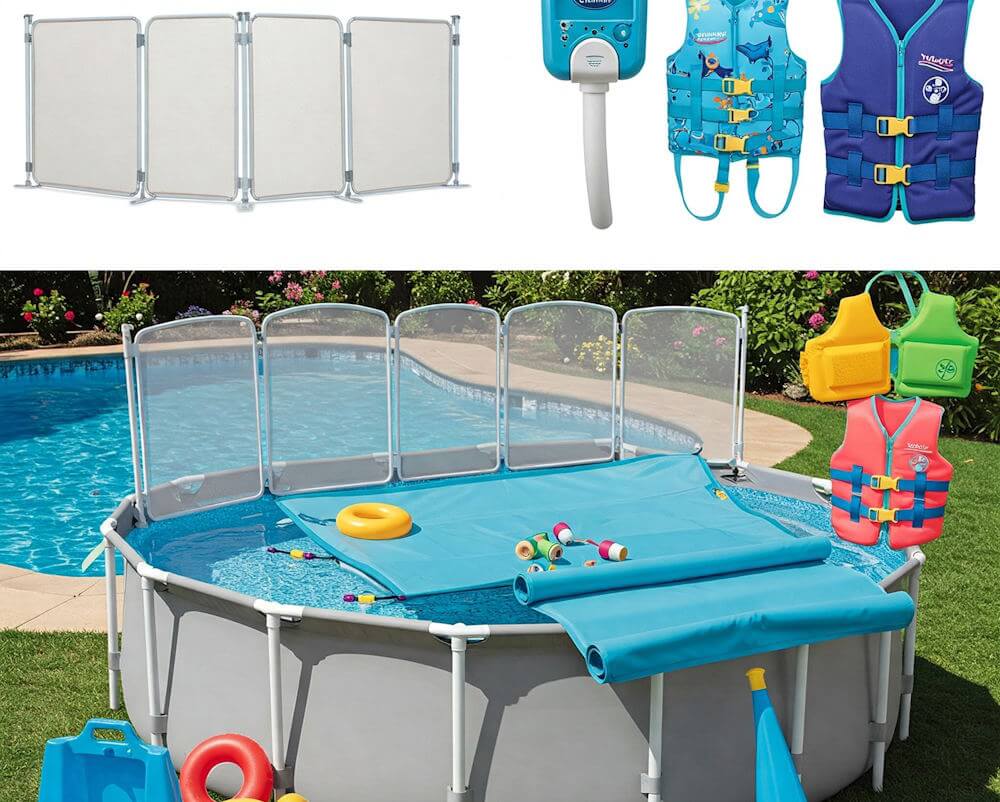Introduction to Swimming Lessons
Swimming is an essential life skill that holds significant importance for children. Beyond being a recreational activity, it serves as a critical foundation for personal safety in aquatic environments. The ability to swim can prevent drowning, which remains a leading cause of accidental death among young children. Given the potential hazards associated with water, parents are encouraged to recognize the signs that indicate their child is ready for swimming lessons.
Enrolling children in swimming lessons holds numerous benefits that extend beyond mere safety. Engaging in swimming enhances cognitive development as children learn various techniques and concepts associated with the activity. For instance, children develop spatial awareness, improve their concentration, and enhance their problem-solving skills through the different strokes and breathing techniques they practice during lessons. Swimming also fosters physical development; it strengthens muscles, promotes cardiovascular fitness, and improves flexibility.
Parents should watch for certain indicators that suggest their child is prepared to embark on swimming lessons. These signs may include a natural affinity for water, such as enjoyment during water play, or previous exposure to aquatic environments. An interest in the activity, combined with a level of comfort in the water, showcases readiness. It is also vital that children possess a certain level of independence and obedience, as swimming lessons often require them to follow instructions closely for safety and proper technique.
Ultimately, investing in swimming lessons is a proactive measure to foster confidence in water. The advantages of starting swimming lessons at an early age go beyond just mastering technical skills; they contribute to the child’s overall well-being and development in a holistic manner. Understanding when and how to introduce your child to swimming lessons is essential in nurturing a lifelong love for this beneficial activity.
Understanding Water Familiarity
Water familiarity is an essential aspect of determining whether a child is ready to embark on swimming lessons. It encompasses the comfort level a child exhibits when in or around water, which significantly influences their enjoyment and safety during swimming activities. One of the primary indicators of water familiarity is a child’s willingness to engage in shallow water play. Children who show enthusiasm in splashing around or exploring gentle waves often demonstrate a degree of comfort and curiosity about aquatic environments.
Another telling sign of a child’s readiness for swimming lessons is their ability to adapt to different water settings. This can include a positive reaction when introduced to larger bodies of water, such as pools, lakes, or the ocean. Children with a high level of water familiarity might be more inclined to venture into these environments without displaying signs of fear or hesitation. Their enthusiasm for water play showcases a foundational level of comfort that is crucial for successful swimming instruction.
Moreover, the ability of a child to float on their back, kick their legs, or even grasp basic movements in the water reflects their familiarity and readiness. Such behaviors not only illustrate comfort but also an understanding of how to interact with water effectively. It is important for parents to observe these indicators thoughtfully, assessing whether their child demonstrates eagerness or reluctance towards aquatic activities.
Ultimately, assessing water familiarity involves keen observation and understanding of your child’s reactions and behaviors in water settings. By recognizing these signs, parents can determine whether their child possesses the requisite comfort level to start formal swimming instruction, thereby laying the groundwork for a safe and enjoyable learning experience.
Physical Ability and Motor Skills
Assessing a child’s readiness for swimming lessons involves a close look at their physical ability and motor skills. Successful participation in swimming activities hinges on children’s capacity to exhibit coordination, balance, and mobility. Coordination is essential as it allows children to synchronize their movements effectively, which is critical for swimming techniques. A child who can perform basic actions such as jumping, running, and playing games that require hand-eye coordination is likely to have the fundamental skills necessary for swimming.
Balance is another significant factor when considering swimming readiness. A child capable of maintaining stability while standing, walking, or moving is more apt to adapt to the water’s environment. This includes the ability to float, tread water, and transition between different swimming strokes. Mobility also plays a crucial role; children should possess the strength and flexibility to navigate in and out of the water comfortably. Observing their movements during playtime, such as climbing on playground equipment or running on various surfaces, can provide insight into their physical capability.
Moreover, the ability to follow simple instructions is a vital indicator of readiness for swimming lessons. Children should be able to comprehend and execute straightforward directions, which is essential during lessons for safety and skill development. For example, the capacity to understand “kick your legs” or “splash your hands” demonstrates their readiness to engage effectively in the learning process. Observationally, assessing how your child interacts during physical activities, their cooperation with peers, and their general enthusiasm for water can guide parents in determining whether their child is prepared to begin swimming lessons.
Emotional Readiness and Comfort Level
Determining whether a child is emotionally ready for swimming lessons involves assessing their comfort level and emotional responses to water. Signs of anxiety or fear related to water can manifest in several ways. For instance, children may express reluctance to approach water, cry when near pools, or have difficulty participating in water-related activities during playtime. These reactions indicate that they may not yet be prepared for formal swimming instruction.
Conversely, signs of excitement or curiosity signal that a child is emotionally prepared to start lessons. Children who show enthusiasm when they see water, eagerly participate in splash games, or express a desire to learn about swimming may be ready for structured lessons. It is essential to recognize these emotional indicators, as a positive attitude toward water can significantly affect a child’s learning experience.
To foster a constructive emotional environment, parents can engage in simple practices that encourage comfort with water. Introducing a child to water gradually helps alleviate any fears. Activities such as visiting a pool for family outings or playing with water toys in a controlled setting can facilitate positive associations with water. It is also beneficial for parents to participate in these activities, providing reassurance and demonstrating that water can be a fun and safe element.
Exposure to water should be framed as an enjoyable experience, without pressure to perform or conquer their fears immediately. Parents can celebrate small milestones, such as entering the shallow end or floating with support. These incremental successes can boost a child’s confidence and further promote a positive outlook towards swimming lessons. Nurturing emotional readiness will ultimately contribute to a child’s ability to learn and thrive in the swimming environment.
Age Considerations for Swimming Lessons
Determining the right age for your child to begin swimming lessons is an essential step in fostering a safe and enjoyable aquatic experience. The American Academy of Pediatrics recommends that children can start formal swimming instruction as early as age 1, although many parents may choose to introduce their child to water in a more casual setting even earlier. At this age, children may be more focused on acclimatizing to water, which builds familiarity and comfort.
As children progress to ages 2 and 3, they typically begin to exhibit greater physical coordination and cognitive abilities, allowing for a more structured swimming lesson environment. These early years are crucial as they align with developmental milestones—such as improved motor skills—which are beneficial for learning swimming techniques. While readiness can vary among individuals, many children typically start to show interest and readiness for more structured lessons around age 4, when they can follow instructions more effectively and have increased strength and stamina.
For school-aged children, around ages 5 to 7, the emphasis can shift towards refining swimming skills and introducing safety rules. Children at this stage are often capable of grasping complex swimming instructions and demonstrating emotional maturity necessary to participate in group swim classes. Older children, usually from ages 8 and up, may be ready to engage in competitive swimming, diving, or other advanced aquatic activities, depending on their interest and skill level.
In summary, while traditional recommendations suggest beginning swimming lessons around age 4, factors like individual physical readiness, emotional maturity, and interest in water activities play significant roles. Parents should observe their child’s comfort in the water and readiness to participate, and consult with professionals to ensure a suitable swimming education experience.
Observing Interest and Enthusiasm
When considering whether a child is ready for swimming lessons, one of the most telling indicators is their interest and enthusiasm toward water activities. Children naturally exhibit curiosity, and their eagerness to engage with water can be an important factor to observe. For instance, if a child shows excitement while playing in the pool or during bath time, it is a positive sign that they may enjoy swimming lessons. This enthusiasm can manifest in various ways, from splashing around to diving underwater during play. By watching how they interact with water, parents can gauge their child’s readiness for formal swimming instruction.
Another crucial aspect to consider is whether the child enjoys watching others swim. If they frequently observe family members or friends participating in swimming activities with keen interest, this may indicate a desire to engage in the same skill-building experience. A child who expresses a wish to join in can be encouraged by involving them in water-play routines, such as teaching them basic splashes or holding their breath underwater.
To further nurture a budding interest in swimming, introducing children to the water in a fun and engaging manner can facilitate a smooth transition to lessons. Activities such as playing with floating toys, practicing blowing bubbles, or engaging in water games can systematically acclimatize them to the aquatic environment. It is essential to create a relaxed atmosphere where the child can feel safe and explore at their own pace, building confidence gradually. Observing these signs of enthusiasm and engagement can provide valuable insight into their readiness for swimming lessons, paving the way for a more successful learning experience.
Social Skills and Group Dynamics
Swimming lessons can serve as an invaluable setting for children to develop not only their swimming abilities but also essential social skills. The ability to interact positively with peers is a crucial indicator of readiness for group swimming lessons. When children exhibit confidence in engaging with their classmates, it reflects their comfort level in social environments, which is vital when participating in structured group activities.
One of the key social behaviors that signal a child’s readiness for swimming lessons is their ability to follow group dynamics. This includes understanding how to wait their turn, share equipment, and cooperate during group exercises. Children who can navigate these interactions demonstrate an awareness of social cues and an ability to engage in turn-taking—skills that help create a harmonious learning atmosphere. For instance, a child who is able to wait patiently for their turn on the diving board or who collaborates with others during teamwork exercises is showing the social maturity expected in a group setting.
Listening to instructors is another essential aspect of social skill development in swimming lessons. A child who can attentively listen to their instructor’s guidance, understand instructions, and apply feedback is more likely to thrive in an aquatic environment. This attentiveness not only aids in their own learning but also contributes positively to the group’s overall experience. Socially adept children may also encourage their peers, fostering a supportive environment that enhances the enjoyment and efficacy of swimming lessons.
In summary, effective social skills are integral to a successful group swimming lesson experience. A child’s ability to interact with peers, adhere to group dynamics, and attentively listen to instructors can greatly influence their readiness for swimming lessons. Recognizing these behaviors can help parents assess when their child is prepared to take the plunge into group swimming instruction.
Safety Awareness and Understanding Rules
The journey toward enrolling a child in swimming lessons often begins with ensuring they possess a fundamental understanding of water safety. A child’s readiness for swimming lessons can be indicated by their ability to comprehend and adhere to basic safety rules associated with water environments. Knowledge of these rules not only promotes the child’s safety but also enhances their confidence in the water.
At a young age, safety awareness can start with simple concepts such as the importance of not running near the pool’s edge, recognizing the difference between shallow and deep water, and understanding the necessity of adult supervision. Parents can introduce these ideas through engaging discussions and relatable stories, emphasizing the role that safety plays in enjoying water activities. For instance, using age-appropriate terms to explain why jumping or diving is dangerous in certain areas can instill a sense of caution in children.
Additionally, teaching a child about the importance of following instructions is paramount. Swimming lessons often require participants to listen carefully to their instructor’s guidelines. Practicing this skill at home can help children become accustomed to following directions. Parents might implement simple games that revolve around listening and executing given commands, thereby reinforcing this critical aspect of learning.
As children progress, parents can introduce more complex concepts such as recognizing rip currents and understanding the significance of flotation devices. This should be done gradually, ensuring that each child is equipped with the knowledge needed to navigate aquatic settings safely. By ensuring that children can demonstrate basic safety awareness and responsiveness to rules, parents effectively prepare them for the next step: formal swimming lessons, where these concepts will be further reinforced.
Conclusion: Assessing Your Child’s Readiness
Recognizing the signs that indicate a child is ready for swimming lessons is a critical step in ensuring their safety and enjoyment in the water. Throughout this examination, we have highlighted several key indicators, including a child’s comfort level in water, their physical readiness, and their ability to follow instructions. Observing these factors can provide invaluable insights for parents and guardians.
It is essential to remember that each child’s journey is unique. While some may display immediate enthusiasm for water activities, others may require additional time to adjust. Parents are encouraged to trust their instincts and consider their child’s personality traits when assessing readiness. For example, a naturally cautious child may need gradual exposure to water environments before feeling confident enough to begin formal lessons.
Moreover, consistent evaluations of your child’s comfort and capability in water can aid in determining the appropriate timing for swimming lessons. Parents should look for developments in their child’s motor skills and coordination, as these are critical for swimming success. It may also be beneficial to facilitate smaller, informal water experiences before diving into structured lessons. This could include family pool days, playing in shallow water, or even a visit to a nearby beach, all of which can foster a love for swimming while assessing readiness.
Ultimately, readiness for swimming lessons is not merely a checklist of traits; it is a multi-faceted consideration that encourages safe engagement with water. By observing behaviors and respecting individual development timelines, parents can support their child’s journey to becoming not only a proficient swimmer but also a confident one. Remember that patience and understanding are vital in this process, as each child’s apprehensions and triumphs will vary widely.



